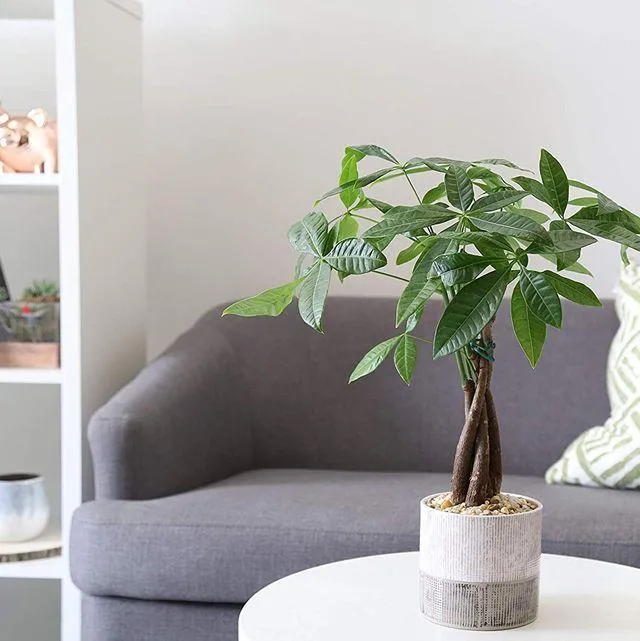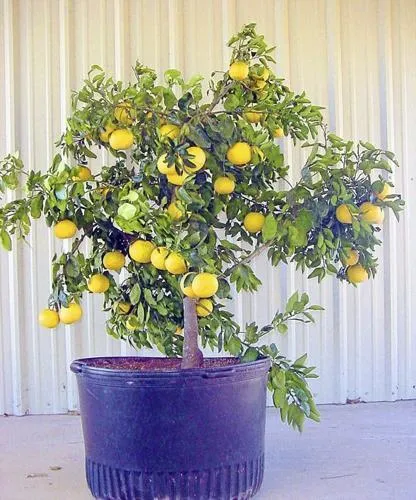Everything You Need to Know About Planting Trees Indoors
Wondering if you can grow trees inside your home? The short answer is yes – with the right conditions and tree varieties, indoor trees can thrive. From my experience living in small apartments over the years, indoor trees have brought me much joy. In this article, I’ll cover all the basics of indoor tree care so you can maximize your plant’s chances of success.
Choosing the Right Tree Species
Not just any tree will do indoors. You’ll want to select types that are well-suited to indoor conditions. Here are some great options to consider:
- Dwarf Ficus Trees: Member of the rubber plant family known for their lush, green leaves. Very low maintenance and tolerate low light well.
- Dwarf Citrus Trees: Lemons, limes, oranges – these make delightful indoor accents. Give them plenty of sunlight for tasty fruit.
- Jade Plant: Iconic succulent tree forms dense branches. Extremely drought and neglect tolerant – basically impossible to kill.
Avoid trees prone to dropping leaves or fruit indoors, like avocado or mulberry. Stick with the above varieties for best success.
Picking the Perfect Pot
Pot selection is key since roots need room to spread. Choose containers at least twice the diameter of the root ball. Terra cotta or plastic work well. I’ve had luck repurposing vintage buckets and planters I’ve found at thrift stores. Drainage holes are a must to prevent root rot from soaked soil, yo.
Providing Proper Light
Indoor trees require medium to bright, indirect sunlight for several hours daily. South- or west-facing windows usually do the trick. Use a light meter app if unsure. I once made the rookie error of placing a ficus in a north window – it etiolated like crazy! Now I know better.

Watering and Humidity
When the top inch of soil dries out, give your tree a thorough drink until water drains freely from the bottom of the pot. Overwatering is the number one killer, so go slightly on the drier side. Humidity levels around 50% will also make your plant super happy. I use a pebble tray lined with wet pebbles under pots.
Feeding Your Tree
During the growing season (spring-fall), fertilize monthly with a balanced, water-soluble houseplant formula. Follow label directions for diluting. Diligence with this step will reward you with lush new growth, yo. Once a year before dormancy, treat your indoor tree to an all-purpose indoor plant soil to refresh nutrients. Re-pot if the root ball has filled the container.
Pruning and Training
Prune suckers and trim leggy growth as needed to maintain a balanced shape. When young, you can train branches for a customized form. I once coaxed a jade tree into taking on the silhouette of a question mark – it kinda worked! Just mess around and have fun with it.
Dealing with Pests
Keep an eye out for pests like spider mites, scale or mealybugs. Isolate any infested plants and spot-treat bugs with neem or insecticidal soap. As a preventative, wipe down leaves monthly with a damp cloth. Healthy trees are more pest-resistant. No need to use harsh chemicals indoors.
Overwintering Tropical Trees
For trees like citrus needing a winter dormancy, move to a spot with temps around 55-65F with minimal light for 12 weeks. Water sparingly. When ready to sprout again, return to original spot. Tropical varieties can stay indoors year-round with care. Ever try growing a tree in your apartment? Kinda dope if you ask me!

With the proper species selection, growing conditions and care routine, indoor trees can thrive beautifully. They add personality and green appeal to any indoor space. Hopefully this guide has answered all your tree planting questions! Holler if you need any other tips. Now go get yourself a ficus – you won’t regret it.
Did I cover everything you needed to know about growing indoor trees? Let me know if you have any other questions! Wishing you the best of luck with your new plant pal.
Tree Plant Indoor Care Guide
| Tree | Light Needs | Water Needs | Humidity Needs | Growth Rate |
|---|---|---|---|---|
| Chinese Evergreen | Low light | Allow soil to dry slightly between waterings | High | Slow |
| ZZ Plant | Low light | Let soil dry out between waterings | Average | Slow |
| Rubber Plant | Medium light | Water when top inch of soil is dry | High | Moderate |
| Palm | Bright, indirect light | Evenly moist soil | High | Moderate-fast |
| Spider Plant | Low-medium light | Let soil partially dry between waterings | Average | Moderate |
FAQ
-
What types of trees can I grow indoors?
There are quite a few tree varieties that do well inside homes and apartments. Some popular choices are dwarf ficus, dwarf oleander, dwarf schefflera, chinese evergreen, dwarf date palm, and weeping fig.
-
How much light do indoor trees need?
Most indoor trees need medium to bright, indirect sunlight for at least 6 hours per day. Direct sunlight through a south-facing window is best. Insufficient light is a major reason indoor trees struggle.
-
What kind of soil should I use?
For planting indoor trees, it’s best to choose a potting soil formulated for houseplants. Look for a soil that drains well and retains some moisture, such as a potting mix with peat moss, compost, and perlite. Avoid garden soil from outdoors as it may contain pests or pathogens.

-
How do I water my indoor tree?
Feel the soil before watering and only water when the top inch or so starts to dry out. Water thoroughly until it drains from the bottom of the pot. The frequency will depend on the tree type and indoor conditions, but around once a week is typical. Overwatering can cause root rot.
-
How do I fertilize an indoor tree?
Use a balanced liquid houseplant fertilizer every few months during the spring and summer. Dilute it to half or quarter strength according to label directions. Fertilizer provides nutrients the tree needs to stay healthy. But don’t overdo it – too much can damage or kill a plant.
-
How can I make my indoor tree look fuller?
Pruning indoor trees allows you to shape them for a nicer look. Cut off gangly branches or suckers growing from below foliage. You can also trim to encourage outward branching for a bushier appearance. Be very careful trimming trees with sap or milky juices though, as it may cause skin irritation.
-
How do I care for an indoor tree over winter?
Once night temperatures drop outdoors, bring trees inside before the first hard frost. Place them in a bright spot and reduce watering, but don’t let soil dry out fully. Check for pests too. Come spring, slowly acclimate trees to outdoor light before returning them outdoors after danger of frost has passed.
-
Is growing a tree indoors difficult?
Despite what some folks might think, indoor trees are actually pretty easy to care for. As long as they receive the proper light, temperature, water and nutrients, most trees will thrive inside. The trick is finding a variety well-suited to indoor conditions. Some online research and these tips should have any tree owner feeling pretty confident!

